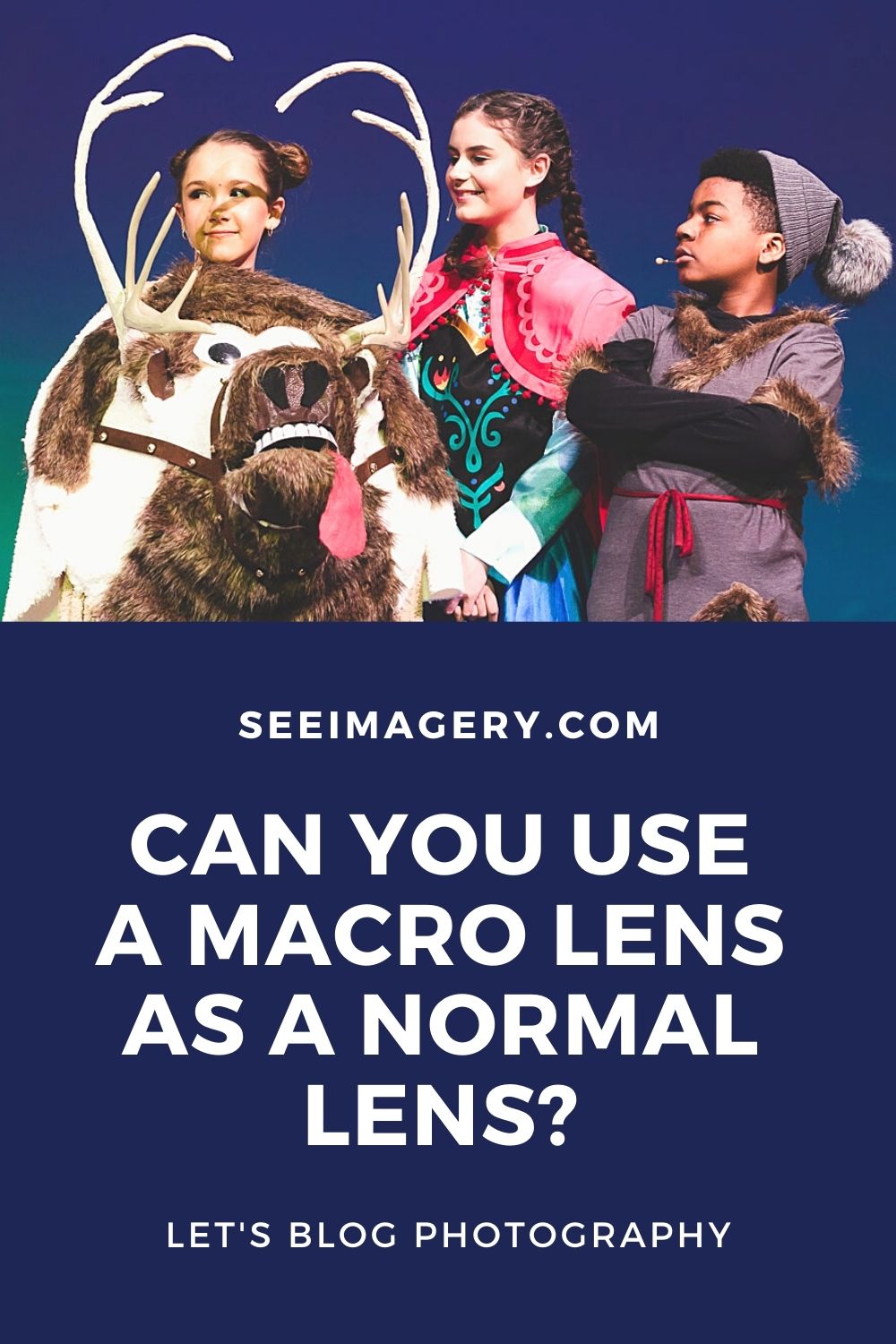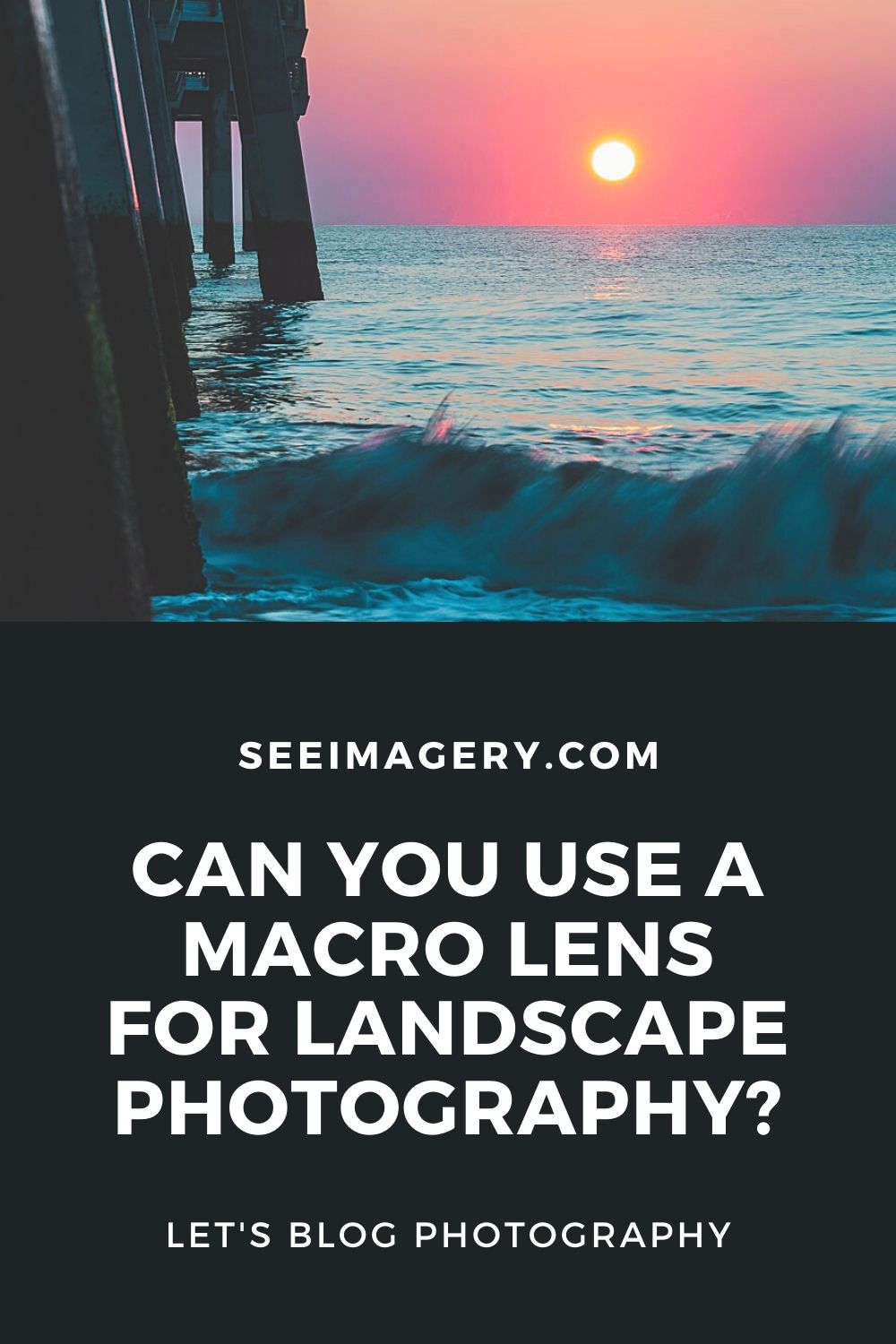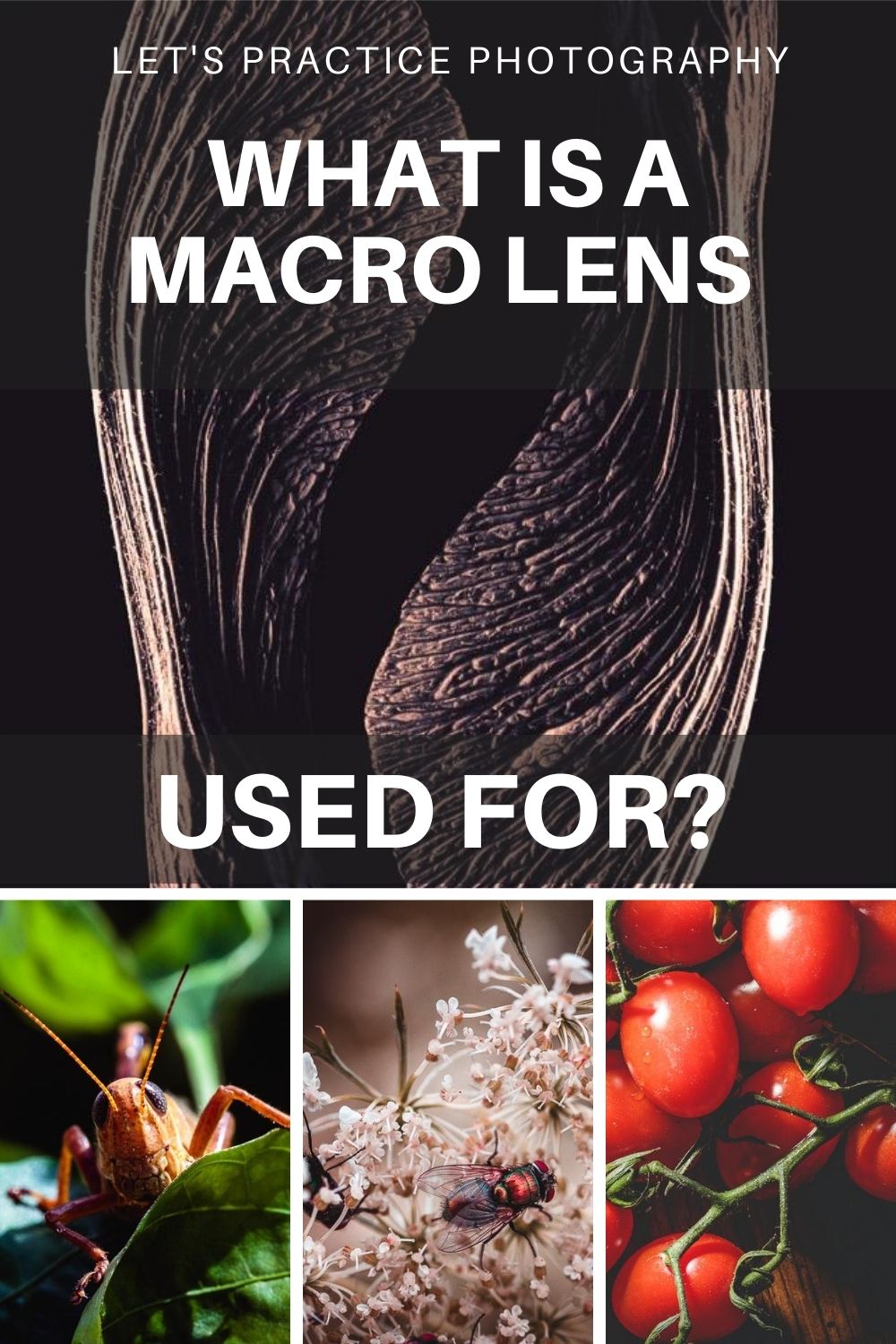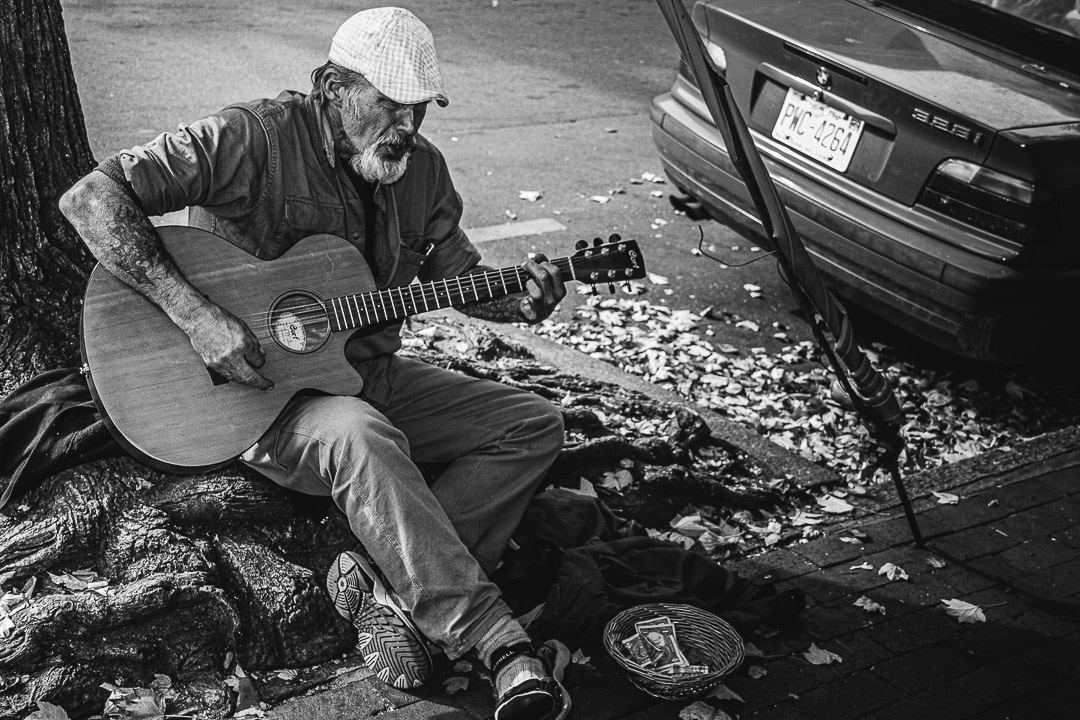First, what is a Macro Lens anyway?
A macro lens is really just a normal lens with a closer minimum focus distance.
Surely, you have tried to get close to your subject only to be hampered by the limitations of your lens. It zooms in and then out, then in again, never achieving focus.
Well, with a macro lens you can get really, really close, and still achieve focus. That’s the beauty of a macro lens.
For example, My regular Canon 85mm 1.8 lens has a minimum focus distance of 85cm or 2.79 feet. Conversely, my Canon 100mm f/2.8 Macro has a minimum focus distance of 30cm or .99 feet.
Sure, it might not seem like much but those extra centimeters count. It is precisely, this ability to get close, which gives us a true magnification ratio of at least 1:1.
A 1:1 magnification ratio means that the size of my subject projected onto the sensor is the exact same size as it is in real life. This magnification ratio of 1:1 or higher is the hallmark of a true macro lens.
What is a Macro Lens Used For?
Typically, when you think macro photography you think about taking photos of small subject matter at close range. Things like flowers, insects and plants are the first subjects of almost any macro enthusiast.
I mean, really who don’t like photos of flies? They are so colorful? Kind of magnificent in their own way don’t you think?

But what else can we take photos of with a macro lens?
I mean, don’t get me wrong, the world of macro goes way beyond flowers, insects, and plants. There is a whole other world of tiny landscapes and sharp, intricate detail waiting to be exposed.
Nevertheless, what If this type of photography really isn’t your thing? I mean, sure, you like taking photos of flowers but it’s more just a pastime hobby. Your real passion is portrait photography or landscape photography.
Is it worth buying a macro lens then?
The answer is a resounding yes! It doesn’t matter what type of photography you are into. If you are out taking photos of flowers, plants, and insects every weekend then make the time invested well worth it.
Realize, every minute you spend with your camera, regardless of subject matter, you are practicing.
Each new genre of photography that you explore will undoubtedly test your resolve as a photographer. It will present you with a new set of unexpected challenges and obstacles to overcome.
These lessons will carry over to your whole body of work. Give yourself the tools to create something beautiful because you’re not just out there messing around. You are creating art!

Still not convinced you should buy a macro lens.
I know what you are thinking! Is it really worth buying a macro lens? A macro lens is expensive, heck all lenses are expensive. If I’m going to drop money on a lens I’m going to buy a normal lens for my portrait or landscape photography.
But wait a minute. Then the question hits you! Can’t I just use a macro lens as a normal lens?
“Everything has beauty, but not everyone sees it.” — Confucius Share on XCan you use a macro lens as a normal lens?

Yes, a macro lens is really just a normal lens with a better minimal focus distance. You can shoot all the same stuff you normally shoot with a normal lens.
I’ll be honest, I didn’t realize this when I first started into photography. I thought a macro lens was a fancy specialty lens that I could only use for close-up photography.
In retrospect, I wish I had bought one sooner. Before I bought my Canon 100mm f/2.8 macro I bought a 50mm 1.8, 50mm1.4, 11-20mm f/2.8, and 85mm f/1.8 lens. Yes, I kind of like primes.
Now don’t get me wrong, the 85mm f/1.8 is a great lens but I barely use it. If I’m in the house I usually put on the 50mm so I’m not on top of my subject.
If I’m outside I usually switch to the 100mm. Yes, more often than not, the 85mm just sits in the bag. So, for me, I wish the macro would have been my second lens purchase.
Now, I know, many photographers love the 85mm f/1.8. Why is it in your bag they say? Well, I like it too. Indeed, it is a great lens.
However, it’s pretty well known that the Canon 85mm f/1.8 also introduces a lot of chromatic aberration when shooting at low f-stops. For this reason, I end up shooting at f/2.8 with the 85 mm much of the time anyway.
This is why I always end up with the 100mm f/2.8 on my camera. It is incredibly sharp and I’m never disappointed with the quality.
In fact, if you are on your second lens purchase I suggest a Macro lens be the second lens you buy regardless of your genre. I’m not the only one, Lauchlan Toal wrote a post about this on SLR Lounge. It doesn’t have to be the 100mm, choose a focal length that most applies to your work.
Can you use a macro lens for portraits?

Yes, a macro is a great option for portraits. One of the best things about using a Macro lens for portraits is that you can capture a bigger story.
As a blogger, with every photo session, you want to capture as many unique images as possible. Get the details, the makeup, the unique stitch patterns, the buttons, and the cufflinks. Tell the whole story!
Really, you can use any lens with a focal length of around 85mm or greater for a typical portrait. Therefore, the 100mm f/2.8 macro is a fine choice for portrait photography.
However, who says you have to shoot typical portraits? You can use a 50mm, 35mm, 24mm, or whatever you want for a unique looking portrait. I actually really love some of the wide-angle portraits I see people doing on Instagram.
Just find a style you like and go with it. If you like the results that’s all that matters. Don’t let someone tell you that you are doing it wrong. That person is living life wrong.
Now, I want to mention a few quick points about macro lenses in regards to portrait photography.
Sharpness – Macro lenses are notoriously sharp and for some photographers, perhaps too sharp. I like my portraits razor-sharp but if that’s not your style then maybe a macro lens isn’t a good choice.
Focusing Speed – Because the range of possible focus is much greater, a macro lens has to work harder to achieve focus. This slows down the time it takes for the lens to lock focus. However, many Macro lenses counter this by adding a focus distance switch to the lens.
The Canon 100mm f/2.8 has a 3-way switch that allows you to choose between full-range, 0.5mm to infinity, and 0.3-0.5mm. Just set it to the appropriate range and problem solved.
Focus Breathing – I had no idea what this was until I tried focus stacking a series of images from a scene I shot with my macro lens. It appeared I had repositioned my camera in some of the frames even though I knew I didn’t.
Introduce focus breathing; focus breathing is when the focal length of your lens seems to change between min and max focus. This phenomenon essentially changes your frame even though you never moved your camera.
Now, I probably never would have known about this had I not tried to stack images. Talk about frustration, especially when trying to focus stack. Apparently, however, all lenses suffer from some degree of focus breathing but macros more so.
Which Macro Lens should I buy for Portrait Photography?
1.) Canon EF 100mm f/2.8L IS USM Macro Lens for Canon Digital SLR Cameras
2.) Sony SEL90M28G FE 90mm f/2.8-22 Macro G OSS Standard-Prime Lens for Mirrorless Cameras
3.) Nikon AF-S VR Micro-NIKKOR 105mm f/2.8G IF-ED Lens
4.) Sigma 258306 105mm F2.8 EX DG OS HSM Macro Lens for Nikon DSLR Camera
Can you use a macro lens for landscape photography?

Absolutely, one of the best things about a Macro lens is the concept of tiny landscapes. Sometimes you head out to capture something amazing and it’s just not happening.
Either the light is boring or the location is just kind of meh. If you have a macro lens with you, you can simply change your perspective and perhaps save an otherwise, wasted trip.
Plus, again, as a photographer and as a blogger, you always want to be looking for the bigger story. Sure, get the wide-angle landscape shot but get the sand, the shells, the moss, and the leaves.
Many times, photographers only share the big picture. As a blogger, you need to do more. You have so many different media platforms that you need to be active on.
These little extra pieces of the puzzle make great content for your Instagram stories for example.
Now, you will find the focal length of most macro lenses to be somewhere in the 90mm – 105mm range. Canon actually makes a 35mm macro but the widest macro lens I know about is the Venus Laowa 15mm f/4.
Do you need a wide-angle Macro to do landscape photography? Of course not, who says you can’t use a 100mm for landscape photography? Not me!
Which Macro Lens should I buy for Landscape Photography?
1.) Canon RF 35mm f/1.8 IS Macro STM Lens, Black – 2973C002
2.) Canon EF-S 35mm f/2.8 Macro IS STM
3.) Sony SEL30M35 30mm f/3.5 e-mount Macro Fixed Lens
4.) Tamron AF 90mm f/2.8 Di SP AF/MF 1:1 Macro Lens for Nikon Digital SLR Cameras
Can you use a macro lens for food photography?

A macro lens is a great option for food photography. My favorite lens to shoot food is the 100mm f/2.8 macro. It’s going to offer you incredible sharpness and bring the intricate tasty details of your dish alive.
Although you have the choice, to shoot food extremely close, you can still step back and capture the wider food story.
It really offers just the right amount of compression to the space your food story occupies. You will also get that shallow depth of field and creamy bokeh that photographers love.
If you like to shoot food a little wider I included some other macro lens options on the list below.
Which Macro Lens for Food Photography Should I buy?
1.) Canon EF 100mm f/2.8L IS USM Macro Lens for Canon Digital SLR Cameras
2.) Sony SEL90M28G FE 90mm f/2.8-22 Macro G OSS Standard-Prime Lens for Mirrorless Cameras
3.) Canon EF-S 35mm f/2.8 Macro IS STM
4.) Nikon AF-S DX Micro-NIKKOR 40mm f/2.8G Close-up Lens for Nikon DSLR Cameras
Can you use a macro lens for jewelry photography?

A Macro lens is really the staple of Jewelry Photography. When you are photographing something of elaborate character and design, you need something that can capture those details.
When you are displaying jewelry on your e-commerce store, you need to show your customers the fine intricacies of that piece of jewelry. They are not able to hold and touch the product with their hands.
You need to offer them that up close interaction through your photography. The best way to do that is with a true 1:1 macro lens.
Which Macro Lens for Jewelry Photography Should I buy?
1.) Canon EF 100mm f/2.8L IS USM Macro Lens for Canon Digital SLR Cameras
2.) Sony SEL90M28G FE 90mm f/2.8-22 Macro G OSS Standard-Prime Lens for Mirrorless Cameras
3.) Nikon AF-S VR Micro-NIKKOR 105mm f/2.8G IF-ED Lens
4.) Sigma 258306 105mm F2.8 EX DG OS HSM Macro Lens for Nikon DSLR Camera
Join the Tribe
Want to join an amazing tribe of photographers, artists, and other creatives? Want more NFT Tips? Check out our Facebook group, NFT Photography Community. The Goal: Let’s just all help each other out!
Also, don’t forget to jump on the email list to get some free Photoshop Overlays and my “very occasional” email. I want to talk with you about inspiration, photography, blogging and just staying motivated.
Share these Pins to Pinterest












[…] different focal lengths, if you have a Macro Lens try […]